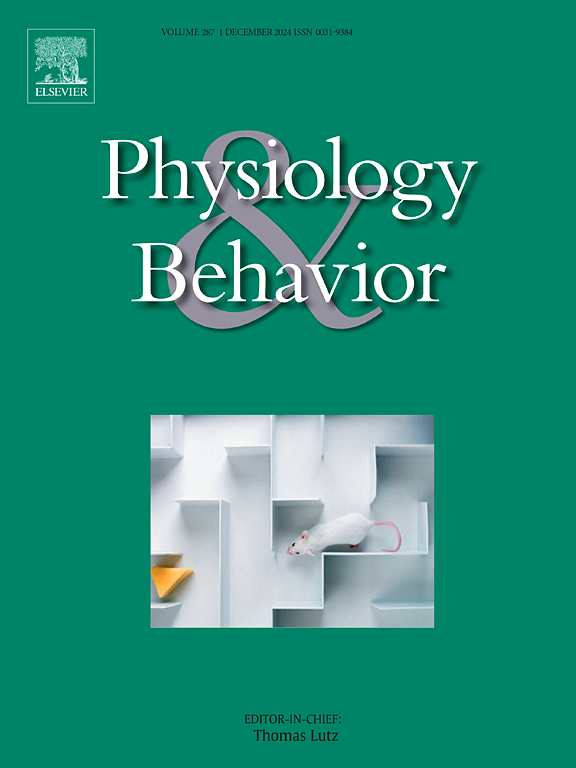急性和重复低剂量脂多糖对雌雄小鼠异性气味偏好的差异影响。
IF 2.5
3区 医学
Q2 BEHAVIORAL SCIENCES
引用次数: 0
摘要
感染威胁影响物种间的社会偏好和配偶选择。研究表明,雌性小鼠会避开患病雄性小鼠的气味,这些雄性小鼠被相对高剂量的脂多糖(LPS)(革兰氏阴性菌的细胞壁)急性治疗。然而,人们对两性对更自然的低水平感染威胁的反应知之甚少。在这里,我们考虑了雄性和雌性小鼠对异性个体气味的反应,分别用极低和低剂量的LPS(分别为1.0和25 μg/kg)进行急性和反复处理。用1.0 μg/kg LPS急性处理的个体对气味有最小程度的回避,而重复处理(第1、4和7天)引起致敏(启动),导致第7天的显著回避。相反,25 μg/kg LPS急性处理个体的气味引起了显著的回避,而重复处理导致耐受性的发展,减少了回避。在所有情况下,雌性都比雄性对异性气味表现出更大的回避。我们的研究结果表明,雄性和雌性小鼠对低水平感染相关的嗅觉线索所传达的感染状态和威胁的性质都很敏感。本文章由计算机程序翻译,如有差异,请以英文原文为准。
Acute and repeated low dose lipopolysaccharide differentially influences opposite-sex odour preference in male and female mice
Infection threat affects social preferences and mate choice across species. Female mice have been shown to avoid the odours of sick males acutely treated with relatively high doses of lipopolysaccharide (LPS), the cell wall of Gram-negative bacteria. However, less is known about the responses of both sexes to more naturalistic low level infection threat. Here we considered the responses of both male and female mice to the odours of opposite sex individuals acutely and repeatedly treated with very low and low doses of LPS (1.0 and 25 μg/kg, respectively). There was minimal avoidance of the odours of individuals acutely treated with 1.0 μg/kg LPS, whereas repeated treatment (days 1, 4 and 7), which elicited sensitization (priming), resulted in significant Day 7 avoidance. Conversely, the odours of individuals acutely treated with 25 μg/kg of LPS elicited significant avoidance, whereas repeated treatment, which lead to the development of tolerance, attenuated avoidance. In all cases females displayed a greater avoidance than males of opposite sex odours. Our results show that both male and female mice are sensitive to the nature of the infection status and threat conveyed by the olfactory cues associated with low levels of infection.
求助全文
通过发布文献求助,成功后即可免费获取论文全文。
去求助
来源期刊

Physiology & Behavior
医学-行为科学
CiteScore
5.70
自引率
3.40%
发文量
274
审稿时长
47 days
期刊介绍:
Physiology & Behavior is aimed at the causal physiological mechanisms of behavior and its modulation by environmental factors. The journal invites original reports in the broad area of behavioral and cognitive neuroscience, in which at least one variable is physiological and the primary emphasis and theoretical context are behavioral. The range of subjects includes behavioral neuroendocrinology, psychoneuroimmunology, learning and memory, ingestion, social behavior, and studies related to the mechanisms of psychopathology. Contemporary reviews and theoretical articles are welcomed and the Editors invite such proposals from interested authors.
 求助内容:
求助内容: 应助结果提醒方式:
应助结果提醒方式:


